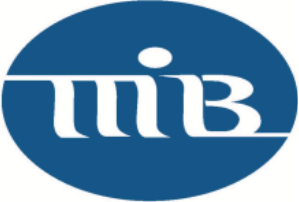I’m assuming you offer your employees a robust retirement plan. Just like in banking, ERISA compliance regarding your retirement plan is paramount.
Your banking regulator looks for red flags relating to credit or flood determinations or maybe BSA issues. The Department of Labor looks for problems relating to ERISA violations. The Employee Retirement Income Security Act of 1974 sets standards and regulations for private-sector employee benefit plans.
The number one key feature of ERISA is Fiduciary Responsibility. We all understand the definition of fiduciary, but do you know who or how this impacts your bank?
Fiduciaries generally include the Plan Sponsor/Employer, the Plan administrators, Trustees, Investment Committees and other individuals who have “control” over the plan’s management or assets. As the employer, your bank is most likely the Plan Sponsor, which in and of itself has fiduciary responsibility and liability for managing the plan assets.
In many cases, individuals like the CEO or CFO may be listed as a Trustee in the Plan documents. As Trustee, these individuals (can be more than one) also have fiduciary responsibilities and liability.
Additionally, some banks have an Investment Committee that could also be considered a fiduciary and thus be responsible for and liable for maintaining proper documentation of their investment decisions and actions taken on behalf of the plan.
What does “fiduciary” responsibility mean? Every fiduciary has a duty to act in the best interests of the plan participants and beneficiaries. This includes such things as prudently managing plan assets, offering a diversity in investments and ensuring compliance with all applicable laws and regulations.
What steps can help reduce bank and individual liability?
- Have a clear understanding of its fiduciary duties and obligations under ERISA.
- Document decisions and processes including minutes from trustee meetings, investment reviews and due diligence processes. This can help demonstrate that the trustee acted prudently.
- Seek professional advice. This can include engaging investment advisors, legal counsel and consultants with expertise in retirement plans.
- Conduct regular plan reviews and audits. Review operations, investments and administrative procedures to ensure ongoing compliance.
- Engage with qualified service providers such as record keepers, investment managers and TPAs (third-party administrators).
- Consider purchasing fiduciary liability insurance which can help cover legal costs, settlements or judgments resulting from alleged breaches of fiduciary duties.
What types of events might cause the Department of Labor to conduct an audit or start an investigation of a retirement plan? Some common triggers are:
- Participant complaints: The DOL may initiate an audit based on complaints or concerns raised by plan participants or beneficiaries. The complaints can relate to issues such as late or improper distribution of benefits, mishandling of participant contributions or other plan administration concerns.
- High Risk Designation: The DOL may target certain plans for audit based on risk assessment criteria. Factors that could contribute to a high risk designation include complex plan structures, prior compliance issues or industry-specific risks.
- Employee Benefit Security Administration (EBSA) initiatives: The EBSA, a division of the DOL, may target industries or issues identified as having a higher likelihood of non-compliance.
- Information from other sources: The DOL may receive information from external sources, such as media reports, whistleblowers or other regulatory agencies, that raise concerns about a specific retirement plan.
- Random selection: Like the IRS, the DOL may conduct random audits as part of its regular enforcement activities.
It is important for plan sponsors and fiduciaries to be aware of their responsibilities and ensure compliance with applicable laws and regulations to minimize the likelihood of a DOL audit. Regularly reviewing your plan’s investment options/fees, updating plan documentation, maintaining adequate records, fee benchmarking and staying informed about regulatory changes can help mitigate compliance risks.
Just like violations of a BSA audit or Flood Determination audit can lead to fines and penalties, so can breaches of fiduciary duties. Some of the penalties and consequences could include:
- The EBSA has the authority to investigate fiduciary breaches and take enforcement actions. The DOL may pursue legal action to recover losses on behalf of the plan and participants, impose civil penalties and require corrective actions to be taken.
- Violations may result in the fiduciary being required to restore any losses incurred by the plan as a result of the breach. This can include returning misappropriated assets, compensating participants for losses and paying for any associated damages.
- In cases where prohibited transactions occur, such as self-dealing or improper use of plan assets, excise taxes can be significant and may include additional penalties.
- Plan participants and beneficiaries can bring lawsuits against fiduciaries for breaching their duties. If a lawsuit is successful, fiduciaries may be required to pay damages to the participants or beneficiaries harmed by the breach.
- Fiduciaries can be held personally liable. This means that their personal assets may be at risk to satisfy any legal judgments or settlements resulting from the violations. Civil monetary penalties can be imposed by various regulatory agencies including the DOL and the IRS.
- Criminal penalties can be imposed resulting from intentional and willful violations of ERISA. This can include imprisonment. It is important to note that criminal penalties are generally reserved for cases involving intentional misconduct, such as embezzlement, fraud or other deliberate and fraudulent acts.
If you suspect violations of ERISA, it is advisable to report the matter to the appropriate authorities, such as the DOL or the DOJ.
Andy is a long time Montana resident living in Bigfork, Mt. He can be reached at (480) 688-1011 or andy@benefitandfinancial.com.
Representatives offer products and services using the following business names: Benefit & Financial Strategies, LLC — insurance and financial services | Ameritas Investment Company, LLC (AIC), Member FINRA/SIPC — securities and investments | Ameritas Advisory Services (AAS) — investment advisory services. AIC and AAS are not affiliated with Benefit & Financial Strategies, LLC.









